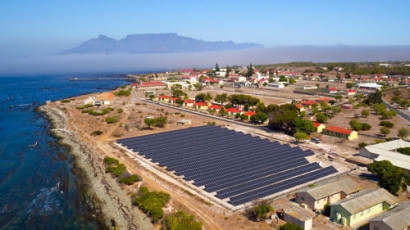
The microgrid will capture solar energy from a 667-kilowatt peak photovoltaic field – equivalent to the average power needed for about 130 homes – that has been installed on the island. The company says it will lower fuel costs and carbon emissions, enabling the island to run on solar power for at least nine months of the year.
An ABB Ability™ wireless network connects the solar plant to the microgrid providing reliable and secure communications. An operations center in Cape Town is capable of monitoring and controlling the microgrid. The remote set-up eliminates the need to maintain a workforce on the island, whose volatile weather can sometimes impede travel to and from the mainland. The wireless solution has also eliminated the need for cable trenches, helping preserve the local habitat on the World Heritage Site.
Robben Island became a symbol of non-violent anti-apartheid resistance during and after the imprisonment of Mandela, who became president in 1994 and led South Africa through the early years of its transition. The Robben Island Museum opened in 1997 and welcomes more than 300,000 visitors a year.
The project is part of a sustainable tourism initiative funded by the Department of Tourism in South Africa and was executed for SOLA Future Energy, an engineering, procurement and contracting company.
“ABB’s microgrid solution integrates solar energy and curtails the use of fossil fuels to power Robben Island, bringing substantial cost efficiencies and supporting the Department of Tourism’s efforts to keep the heritage and spirit of this world renowned island alive,” said Claudio Facchin, president of ABB’s Power Grids division. “The project supports our focus on microgrids and our ongoing commitment to reduce environmental impact as a partner of choice for enabling a stronger, smarter and greener grid.”
Photo Robbens Island @ ABB

